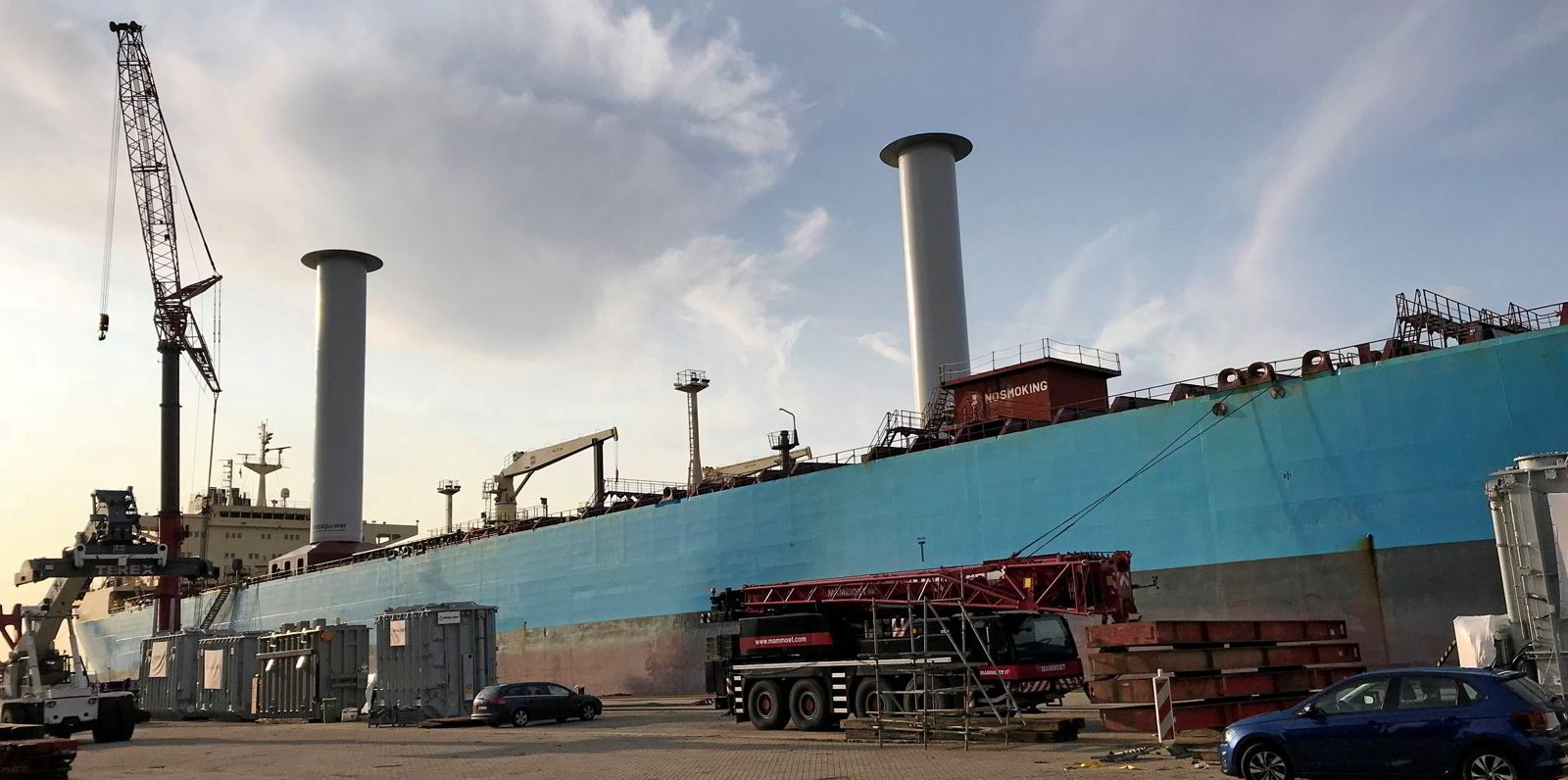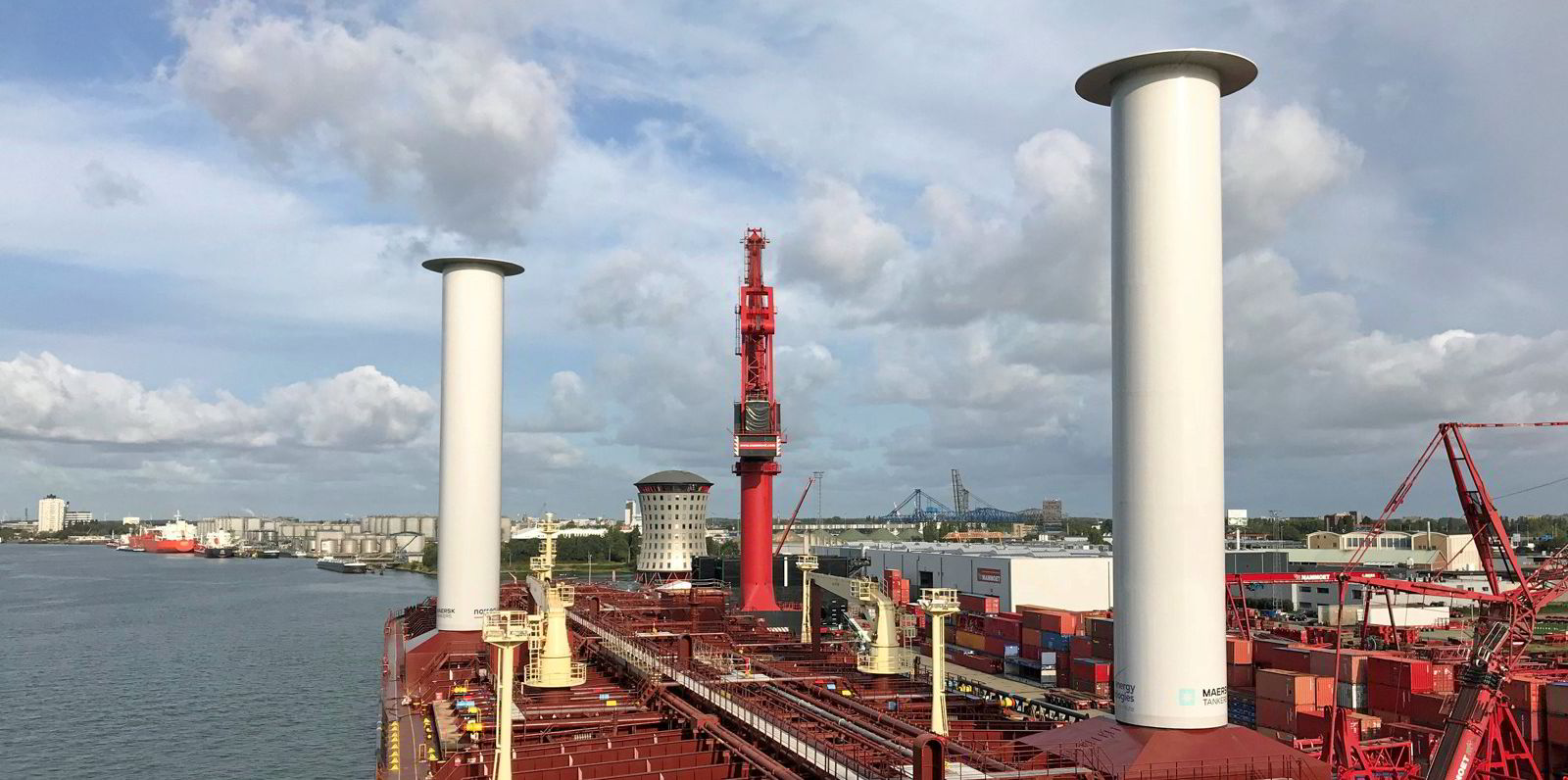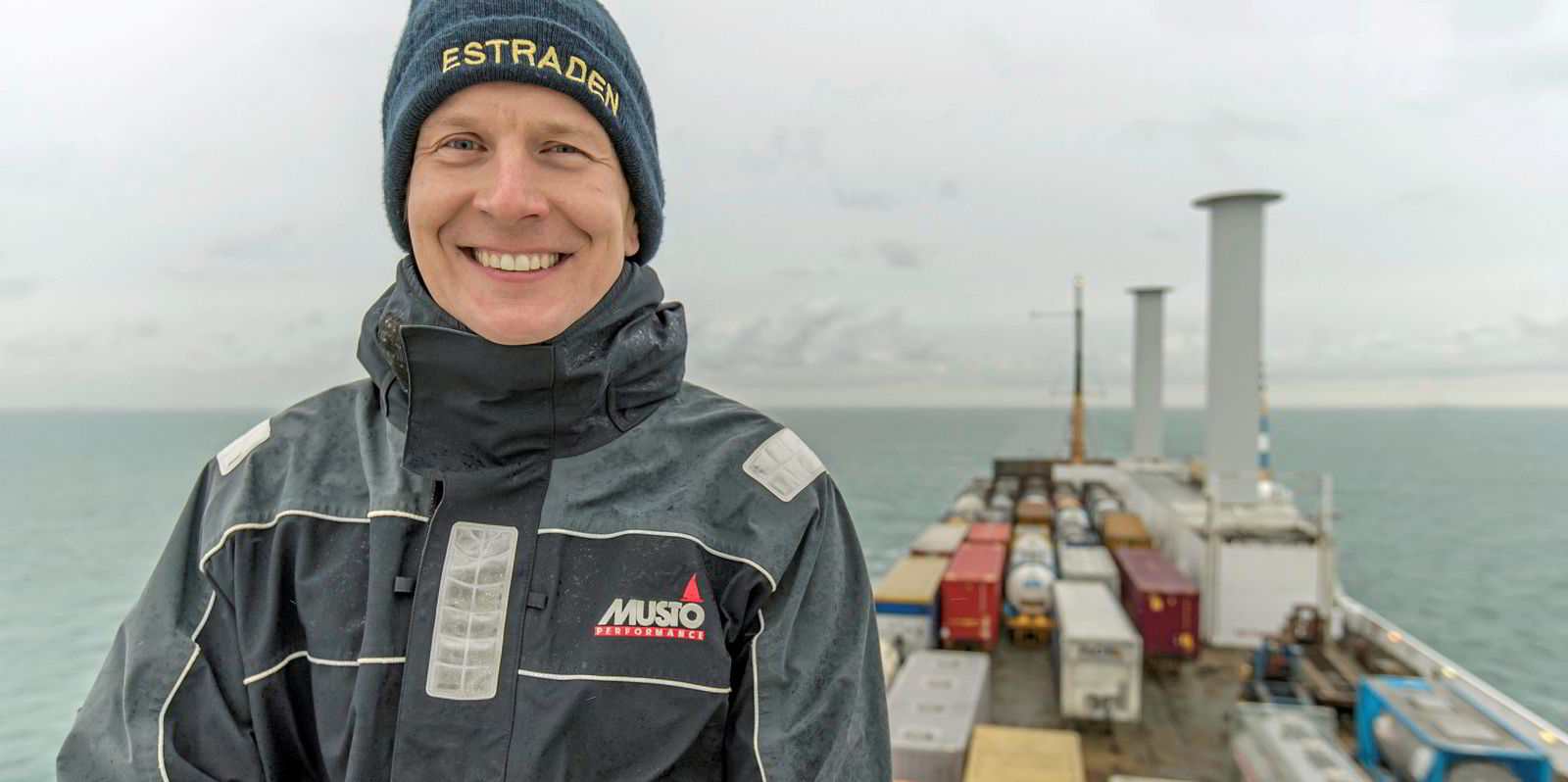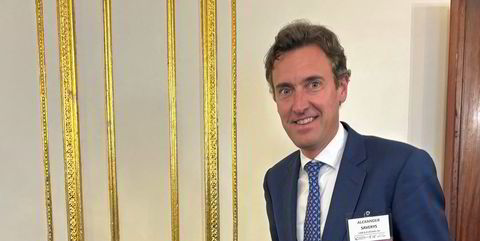Maersk Product Tankers has confirmed it sold one of the few vessels installed with rotor sails in the world but vowed to continue to pursue wind propulsion.
The Denmark-based owner, majority owned by AP Moller Holding, told TradeWinds that the 109,647-dwt Maersk Pelican (built 2008) was sold and delivered to its new owner.
“This vessel was special to us,” chief technical officer Tommy Thomassen said in an emailed statement. “It was the first product tanker in the world testing the use of wind-propulsion technology, targeting a reduction in fuel cost and associated emissions.
“While the vessel is sold with the technology installed on board, we will continue to work with relevant parties to test the commercial viability of using wind-propulsion technology on board product tankers.”
A pilot project
Rotor sails are large, cylindrical mechanical sails that spin to create a pressure differential — known as the Magnus effect — that can propel a vessel forward.
They are generally designed to provide auxiliary wind propulsion while the ship relies on other types of bunker fuel as the main sources of energy.
In a pilot project backed by Shell and the Energy Technologies Institute, the shipowner installed two 30-metre-tall rotor units aboard the LR2 product tanker in a bid to reduce fuel consumption and associated greenhouse gas emissions.

Affiliate Maersk Tankers, which operated the ship, said the retrofit achieved an 8.2% fuel saving and reduced CO2 emissions by 1,400 tonnes in a year-long trial that ended in 2020.
During the trials, the rotors operated in tropical climates and Arctic conditions, in Europe, the Middle East, Asia and Australia.
The performance data was validated by independent experts from Lloyd’s Register to ensure an impartial assessment.
Norsepower, which designed the rotor sails for the tanker, has also installed similar products on board the 9,700-dwt ro-ro Estraden (built 1999) and 2,800-passenger ferry Viking Grace (build 2013).
Not for money
Maersk Product Tankers did not disclose the sale price for the Maersk Pelican and did not identify its buyer. But data from Equasis and Clarksons Research showed Buana Lintas Lautan acquired the ship last quarter and renamed it Timberwolf.
According to VesselsValue, the vessel was worth more than $20.5m then.
The Indonesia company did not return repeated emails seeking comment on the acquisition.
With the energy-saving equipment being relatively new, brokers speculated that Buana Lintas Lautan bought the LR2 as a green shipping project rather than from a pure financial perspective.
“I bet it’s not cheap,” a London-based broker said, adding that the owner may need to spend on additional training and maintenance for the rotor sails.
Another broker said the vessel was not able to fetch extra premiums in the period charter market, despite the claim of fuel savings.
“Scrubber-fitted vessels command a premium, but that’s all,” he said. “No other type of energy equipment gets a premium.
“Perhaps this will change when decarbonisation regulations come into force in the coming years.”







